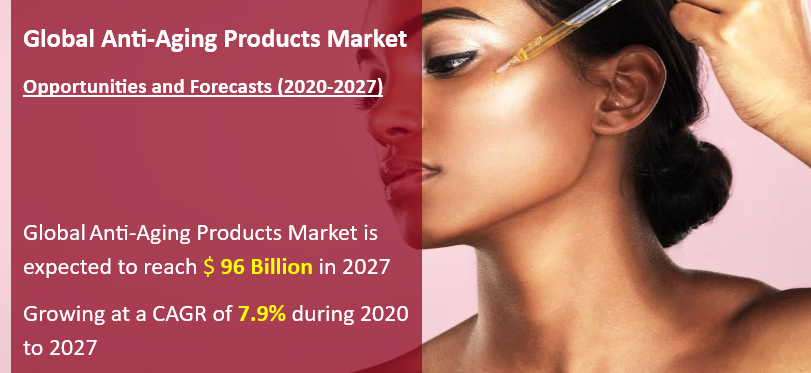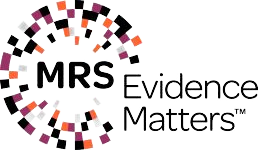Report Overview
The report will cover the overall analysis and insights in relation to the size and growth rate of the ” Global Anti-Aging Products Market ” by various segments at a global and regional level for the 2014-2027 period, with 2014-2018 as historical data, 2019 as a base year, 2020 as an estimated year and 2020-2027 as forecast period.
COVID 19 Impacts on Anti-Aging Products Market
COVID-19 is a new strain of coronavirus that has not been previously identified in humans. Coronaviruses (CoV) are a family of RNA (ribonucleic acid) viruses. COVID-19 started in Asia and is now spreading over the rest of the world via person-to-person contact and community spread. COVID-19 pandemic may have an potential impacts on Anti-Aging Products Market.
Report Includes
- The report provides information about the current and upcoming trends in the market from 2020 to 2027, which helps determine the prevailing opportunities.
- An overview of the global markets for antiaging products and services, including definitions and measurements for the baby boomer population.
- The report includes information related to key drivers, restraints, and opportunities with a detailed impact analysis.
- The study provides an in-depth analysis of the market with current trends and future estimations to elucidate the imminent investment pockets.
- Discussion of individual antiaging markets, products and services, anti-aging applications, technologies, and regions in the context of baby boomer demographics.
- 26 Market data Tables and 24Figures.
- 250 Company Profiles Operating in Anti-Aging Products Market.
- 126 Market data Tables.
- Examination of the market structure and competitive landscape.
- Up-to-date analyses of competitive developments, such as expansions, joint ventures, new products launches, expansions, and mergers & acquisitions in the global personal protective equipment market.
- Key market players within the market are profiled in this report and their strategies are analyzed thoroughly, which help understand the competitive outlook of the global market.
- Comprehensive analysis of factors that drive and restrict the growth of the market is provided.
Scope of the reports
- This report is focused on the aging population, which is the largest user of anti-aging products and services.
- The report covers both products and services affecting specifically the aging demographics.
- Historical, base year, and forecast data are provided for each market segment of the report.
- Each section will provide market data, market drivers, trends and opportunities, top-selling products or suppliers, and general market outlook.
Segments covered in the reports
- On the Basis of Region: North America, Europe, Asia Pacific, Middle East & Africa, Central and South America
- On the Basis of Countries: United States, Russia, China, Germany, United Kingdom, France, Japan, Israel, Saudi Arabia, South Korea, United Arab Emirates, Canada, Switzerland, Australia, India, Italy, Sweden, Spain, Belgium, Netherlands, Norway, Italy, Brazil, Argentina, Mexico, South Africa and others.
- On the Basis of Devices: Anti-Cellulite Treatment, Laser Aesthetic Devices, Microdermabrasion Devices, Radio Frequency Devices and Others.
- On the Basis of Product Type: UV Absorbers, Anti-Wrinkle Products, Dermal Fillers, Botox and Anti-Stretch Mark Products.
- On the Basis of End User: Hospitals, Clinics and Home Healthcare.
Major Players in the Global Anti-Aging Products Market are:
Allergan PLC, ARK Skincare, Avon Products Inc., Estée Lauder Inc, Henkel AG, Beiersdorf AG, Bioderma , Biomod Concepts Inc., Coty Inc., Cellex-C, Colgate Palmolive Company, L’Oréal S.A., Alma Secret Company, Procter & Gamble Co., PhotoMedex Revlon Inc., Clarins Group, Kiehls’s, Lumenis, Lotus Herbals Limited, Oriflame Cosmetics AG, Nature Republic, Kao Corporation, Mary Kay Inc., Natura & Co., Bayer AG, CCA Industries Inc., Christian SA, Clinique Laboratories LLC, Elizabeth Arden Inc., Ella Bache, Estee Lauder Inc., Jan Marini Skin Research Inc., Johnson & Johnson, La Prairie Group AG, LR Health & Beauty Systems; Merck KgaA, NeoStrata Company Inc., Neutrogena Corporation, Pfizer Inc., Shiseido Co. Ltd., Unilever PLC, Valeant Pharmaceuticals and others.
Objectives of the study
To provide detailed information regarding drivers, restraints, opportunities and challenges are influencing the growth in the respective market. To analyze the competitive intelligence of players based on company profiles and their key growth strategies. To strategically analyze micro markets with respect to the individual growth trends, their prospects, and their contribution to the total respective market. To analyze competitive developments such as expansions, and product launches, along with research & development (R&D) activities undertaken in the respective market. A unique model is created customized for each study also offers suggestions that help enterprises to identify and mitigate risks.
Note –
- GIR Reports will also support you post-purchase for a period of 6 months to answer any of your queries related to the following market and to provide you any more data if you need, for your analysis.
- Also, you can buy some selected Chapters from the report.
FREQUENTLY ASKED QUESTIONS?
- What is the total market value?
- What will be the growth in 2027?
- What are the key trends in the market?
- What are the major players in the markets?
- What are the key growth strategies of industry players?
- Which region would offer a higher growth?
- What are the countries included in the rest of the word segments?
- How can I get report sample?










